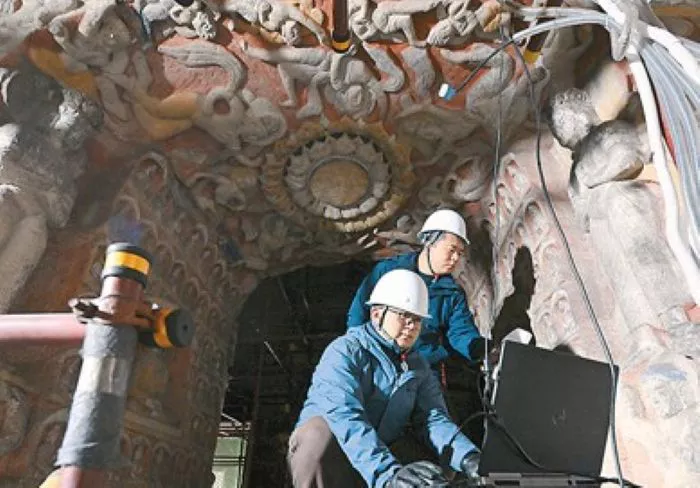From 3D-printed cave replicas in Qingdao to VR explorations of Sanxingdui ruins, digital innovation is revolutionizing how China safeguards and shares its cultural legacy. The convergence of archaeology and technology now enables millimeter-precise reconstructions of fragile relics while creating immersive experiences that bring history to life for millions.
Resurrecting the past through science
At Dazu Rock Carvings, a UNESCO World Heritage Site, infrared imaging and 3D laser scanning have become indispensable tools for conservators. “Digital diagnostics allow us to see beneath the surface without physical contact,” explains Jiang Siwei, director of the Dazu Research Institute. The Tang Dynasty sculptures recently starred in CCTV’s Spring Festival Gala, their preservation aided by virtual restoration simulations that minimize trial-and-error in actual conservation work.
Zhejiang University’s breakthroughs in high-fidelity replication have made global waves. Their polymer reconstructions of Yungang Grottoes – complete with removable sandstone-textured modules – demonstrate how 3D printing can democratize access to immovable cultural treasures. Since 2010, the team has digitally documented 220 heritage sites using proprietary scanning technology.
Museums reimagined
The National Museum’s digital docent “Ai Wenwen” represents the next frontier, combining real-time speech synthesis with encyclopedic knowledge of 1.43 million artifacts. Meanwhile, Jilin Provincial Museum’s AR glasses offer tailored tours – from cartoonish prehistoric hunts for children to scholarly analyses of Han Dynasty bronzes.
At Sanxingdui, visitors don VR headsets to “excavate” sacrificial pits alongside virtual archaeologists. The 30-minute experience culminates in a breathtaking flight over the ancient Shu kingdom’s capital, reconstructed through painstaking digital archaeology.
Heritage in your pocket
Platforms like “Shanhai” app and Digital Library Cave are dismantling physical barriers to cultural access. Using gaming engines, these projects transform static artifacts into interactive stories – whether exploring the craftsmanship behind a Shang Dynasty cauldron or reassembling fragmented Dunhuang manuscripts through puzzle gameplay.
As Tencent’s lead designer Xue Xiaoli notes, their 4K-resolution Dunhuang replica achieves “near-perfect millimeter accuracy.” Such innovations foreshadow a future where AI-assisted curation and user-generated content will further democratize heritage engagement, ensuring China’s ancient treasures remain vibrantly relevant in the digital age.
Related Topic:
- Global Luxury Travel Market to Surpass $2 Trillion by 2035
- EU Digital Product Passport Set to Transform Travel Retail by 2026
- Devon and Cornwall Poised for Record-Breaking Tourism Surge in 2025

